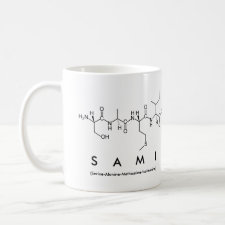
Authors: Ali WH, Derrien D, Alix F, Pérollier C, Lépine O, Bayoudh S, Chapuis-Hugon F, Pichon V
Article Title: Solid-phase extraction using molecularly imprinted polymers for selective extraction of a mycotoxin in cereals.
Publication date: 2010
Journal: Journal of Chromatography A
Volume: 1217
Issue: (43)
Page numbers: 6668-6673.
DOI: 10.1016/j.chroma.2010.04.071
Alternative URL: http://www.sciencedirect.com/science/article/B6TG8-4YYXJPT-5/2/0ecf458a1be655c732a3449e1bfada2f
Abstract: The aim of this work was to develop a method for the clean-up of a mycotoxin, i.e. Ochratoxin A (OTA), from cereal extracts employing a new molecularly imprinted polymer (MIP) as selective sorbent for solid-phase extraction (SPE) and to compare with an immunoaffinity column. A first series of experiments was carried out in pure solvents to estimate the potential of the imprinted sorbent in terms of selectivity studying the retention of OTA on the MIP and on a non-imprinted polymer using conventional crushed monolith. The selectivity of the MIP was also checked by its application to wheat extracts. Then, after this feasibility study, two different formats of MIP: crushed monolith and micro-beads were evaluated and compared. Therefore an optimization procedure was applied to the selective extraction from wheat using the MIP beads. The whole procedure was validated by applying it to wheat extract spiked by OTA at different concentration levels and then to a certified contaminated wheat sample. Recoveries close to 100% were obtained. The high selectivity brought by the MIP was compared to the selectivity by an immunoaffinity cartridge for the clean-up of the same wheat sample. The study of capacity of both showed a significant higher capacity of the MIP
Template and target information: ochratoxin A, OTA
Author keywords: molecularly imprinted polymer, Solid-phase extraction, mycotoxin, food analysis



Join the Society for Molecular Imprinting

New items RSS feed
Sign-up for e-mail updates:
Choose between receiving an occasional newsletter or more frequent e-mail alerts.
Click here to go to the sign-up page.
Is your name elemental or peptidic? Enter your name and find out by clicking either of the buttons below!
Other products you may like:
 MIPdatabase
MIPdatabase









